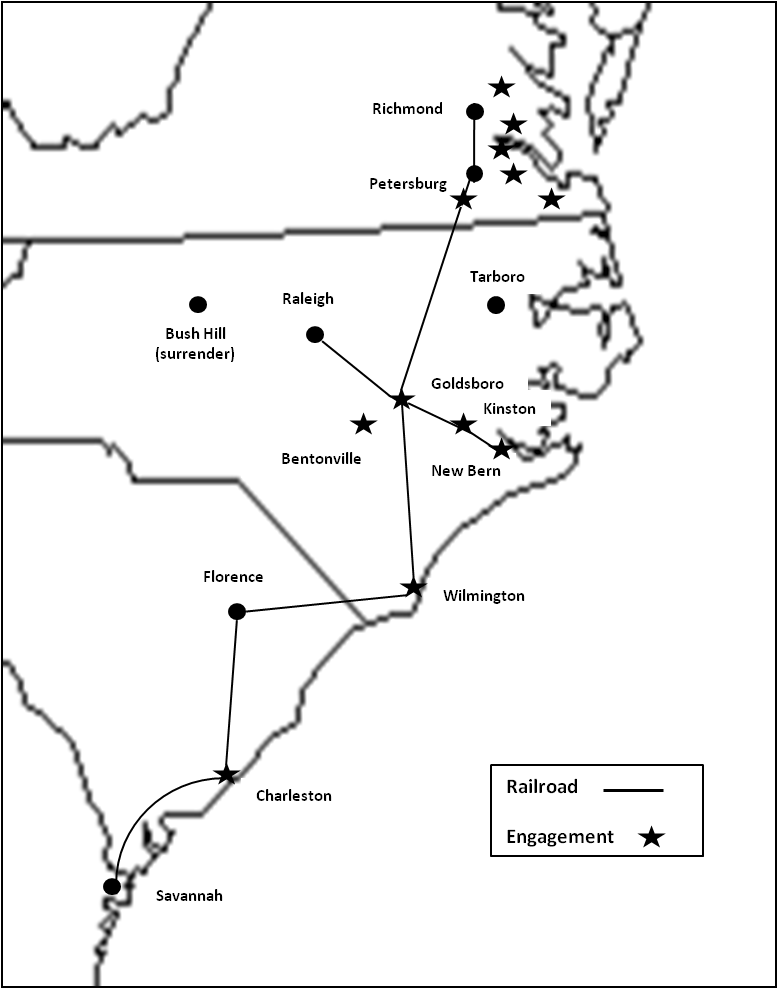Overview

By the start of 1862, the Confederacy realized that the war would not be a short contest, nor would it be easily won. The government in Richmond issued a call for more troops, and North Carolina answered the call with fifteen new regiments. One of the infantry regiments formed during this second wave of enlistments was the 51st Regiment North Carolina Troops.
The 51st North Carolina drew most of its recruits from the Cape Fear region of the state. Eighty-five percent of the soldiers were residents of Columbus, Cumberland, Duplin, New Hanover, Robeson, and Sampson Counties when they enlisted. On April 30, 1862, the regiment mustered into service with 877 officers and men, all of whom committed to serving for the duration of the war. Through the course of the conflict, a total of 1,430 soldiers served in the regiment. Almost 400 of the men died before the war was over.
The recruits, mostly farmers, spent the first few months of their enlistments training to be soldiers and adapting to military life. In December 1862 they were assigned with three other regiments to Clingman’s brigade. A few weeks later, they got their first taste of combat near Goldsboro.
The next year, Clingman’s brigade moved up and down the coasts of North and South Carolina, countering threats from Union incursions. In early July 1863 four of the 51st Regiment‘s companies skirmished with Union cavalry near Warsaw, North Carolina. Not long after the action near Warsaw, the regiment rushed to Charleston, where it was instrumental in the bloody repulse of the Union assault on Battery Wagner.
In early 1864, Clingman’s brigade was called to Virginia to counter a Union push up the James River toward Richmond. The brigade was assigned to General Robert Hoke’s division, which was in turn assigned to Robert E. Lee’s Army of Northern Virginia. From May through September of 1864, the 51st North Carolina fought at Drewry’s Bluff, Cold Harbor, Petersburg, Globe Tavern, and Fort Harrison. During those five months, the regiment lost 385 men, killed and captured, of the 874 soldiers who were present for duty on May 1, 1864. An additional 300 men were wounded during that period, some more than once.
The 51st Regiment returned to North Carolina in late 1864, arriving just in time to witness the fall of Fort Fisher and the capture of Wilmington. Hoke’s division spent the next few months as part of General Joseph Johnston’s army as it unsuccessfully tried to halt Sherman’s advance through North Carolina. The regiment fought in two more major engagements before Johnston surrendered his army on April 26, 1865. The 51st Regiment North Carolina Troops officially surrendered as a unit on May 1, 1865, three years and one day after it was organized in Wilmington.
Copyright © 2021 – 2025 by Kirk Ward. All rights reserved.